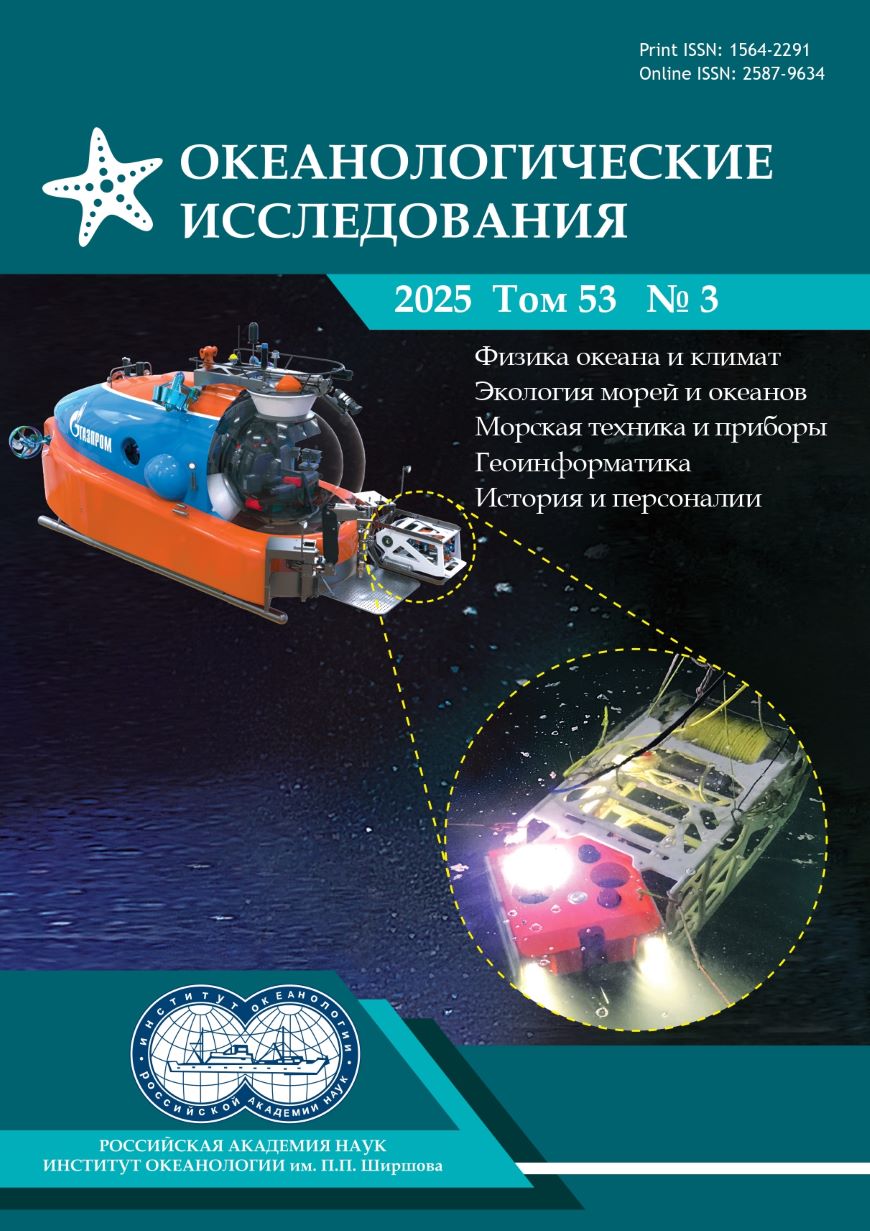THE PHYTOINCUBATOR MODULE
Abstract
In marine ecological expeditions, when determining the rate of formation of organic matter in the process of photosynthesis (the values of primary production), researchers are faced with the need to create conditions for the exposure of water samples with phytoplankton, collected at different stations and depths, at a large distance from each other and with different values of temperature and illumination. The incubators currently in use do not allow for setting illumination and incubation temperature individually for each sample. Mismatches in light and temperature conditions at the sampling point and in the experiment may lead to errors in assessing primary production and determining light dependence. Correct determination of the magnitude of primary production at different depths of the photosynthesis zone with different values of temperature and illumination requires the creation of conditions for the exposure of water samples with phytoplankton that are as close as possible to natural ones, which requires the use of appropriate incubators. In marine expeditions, depending on the intensity of sampling and the time of their exposure, an incubator with a different number of cells may be required to conduct an experiment. The article describes the developed design of a modular incubator, which allows for quick assembly of incubators for the required number of cells. A sample incubation module was manufactured for trial operation and design optimization. The incubation module allows for incubation of a water sample at specified exposure time, temperature and illumination individually in each cell.
References
- ICES Incubator. https://www.hydrobios.de/en/product?product_id=46,.(date of access: 15.03.2025).
- Incubatory. https://ptfkorpus.ru/catalogue/oborudovanie-dlya-biologii/inkubatory/.(date of access: 15.03.2025).
- Korsak, M. N. and Yu. I. Sorokin, 1980: Primary production and features of its formation. Ecosystems of the pelagic zone of the Peruvian region. Moscow, Nauka, 81–94.
- Marja Ruoppa and Pertti Heinonen (eds.), 2006: Reference publication on Environmental Protection “Biological methods of water quality research in Finland” Place and year of publication EDITA (Edita Publishing Oy) – multidisciplinary company, Helsinki, https://helda.helsinki.fi/server/api/core/bitstreams/5c151f95-9331-4b4e-b6d3-fa4f2d8472a2/content.(date of application: 20.10.2024).
- Mosharov, S. A. and S. V. Gontarev, 2015: Phytoincubator for determining the primary production of phytoplankton with individual temperature and illumination settings. Modern methods and means of oceanological research (MSOI-2015). Materials of the XIV All-Russian Scientific and Technical Conference. Moscow, 319–322, http://www.spsl.nsc.ru/FullText/konfe/%D0%9C%D0%A1%D0%9E%D0%98_2015-2.pdf.(date of application: 20.10.2024).
- Mosharov, S. A., E. M. Serova, M. N. Korsak, and G. A. Dallakyan, 2009: Features of the toxic effect of copper on various phytoplankton communities of the Baltic Sea. Vestn. Moscow University. Series: Biology, 3, 34–39.
- Mosharov, S. A., S. V. Gontarev, and M. N. Korsak, 2015: New phytoincubator with temperature and illumination control for monitoring environmental parameters of aquatic ecosystems. Safety in the technosphere, 4 (July–August), 3–9.
- Vedernikov, V. I., V. I. Gagarin, A. B. Demidov, V. I. Burenkov, and P. A. Stunzhas, 2007: Distribution of primary production and chlorophyll in subtropical and tropical waters of the Atlantic Ocean in autumn 2002. Oceanology, 47 (3), 418–431.
- Vinberg, G. G., 1960: Primary production of water bodies. G. G. Vinberg; Institute of Biology of the Academy of Sciences of the BSSR. Minsk, Publishing House of the Academy of Sciences of the BSSR, 329 p.
Transfer of copyrights occurs on the basis of a license agreement between the Author and Shirshov Institute of Oceanology, RAS










